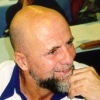István Németi
After graduating from university, between 1966 and 1971, he participated in the design and maintenance of the Hungarian electricity grid at the Power Plant and Network Design Company (Erőterv). The group leader, Géza Bogdánfy, prepared a computer program for the network development and maintenance. He further developed the program by rethinking the concept of the program and introducing heuristics and random methods, which resulted in it being used for the operation of the entire electricity grid for 10 years from 1970.
From 1971 he was employed at the Institute of Industrial Economics and Operations Management (NIMIGÜSZI) of the Ministry of Heavy Industry. His interest turned towards complex program systems, and the semantics of programming languages in general. Under his leadership, a 7-person Programming Languages Group was formed; Andréka Hajnal joined its work at that time. After program specification and verification, a straight path led to theorem proving, then to the so-called new programming languages and artificial intelligence. In addition to writing programs and studies on these topics for the National Planning Office (OT), they regularly held seminars (of national interest) on the topics of ALGOL 68, affix grammars, and semigroup-theoretic automata. Their other topics were: mathematical logic, universal algebra, and algebraic logic.
From 1972, his PhD studies were supervised by Tamás Gergely. During their joint study trip abroad, they became acquainted with the Prolog logic programming language in Edinburgh. In 1974, they brought home the Edinburgh description of the Prolog implementation, based on which Péter Szeredi (in CDL language) developed a Hungarian Prolog interpreter in 2 weeks. In 1977, he obtained a PhD degree, and in 1978, he obtained a PhD degree in Mathematics and Computer Sciences at ELTE.
From 1977 he worked at the Mathematical Research Institute of the Hungarian Academy of Sciences (later named the Alfréd Rényi Mathematical Research Institute); Andréka Hajnal followed him in 1978. Together with Andréka Hajnal and Tamás Gergely, he developed the so-called non-standard-time dynamic logic (NDL), within the framework of which programs can be examined in many ways, e.g. the strength of different program correctness proof methods could be compared.
In 1987, he discovered that a Turing machine could be operated in the spacetime of a black hole in such a way that it could solve a non-computable problem in the standard sense. This (and independent discoveries by other researchers) later developed into the branch of nonconventional computing known as relativistic computers, in whose research he has been involved with Andréka Hajnal from the very beginning.
During his research, he built up extensive international contacts. He obtained his doctorate from the Hungarian Academy of Sciences in 1987. He was awarded the Széchenyi Professorial Scholarship between 2000 and 2003. His research areas include mathematical logic, algebraic logic, space-time geometry, relativity theory, and relativistic computers.
His awards include: Gyula Farkas Prize (Bolyai János Mathematical Society, 1974); Academic Prize (MTA, 1974); László Kalmár Memorial Medal (shared, NJSZT, 1979), Alfréd Rényi Prize (Rényi Institute, 1987).
Created: 2021.10.01. 17:50
Last modified: 2024.03.23. 20:07

